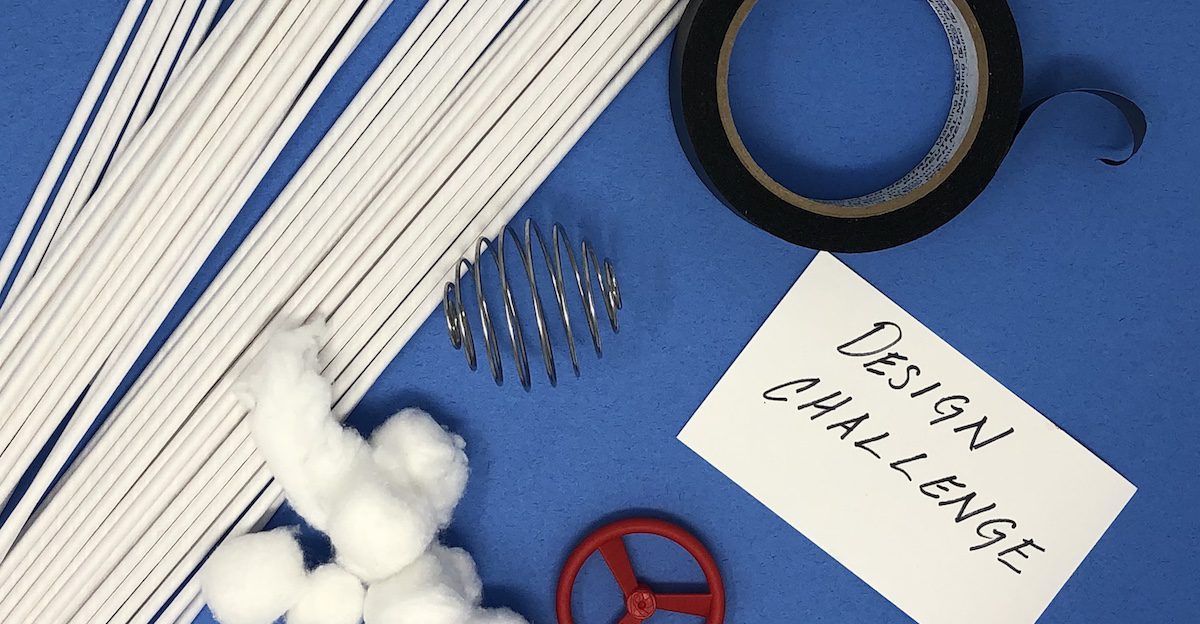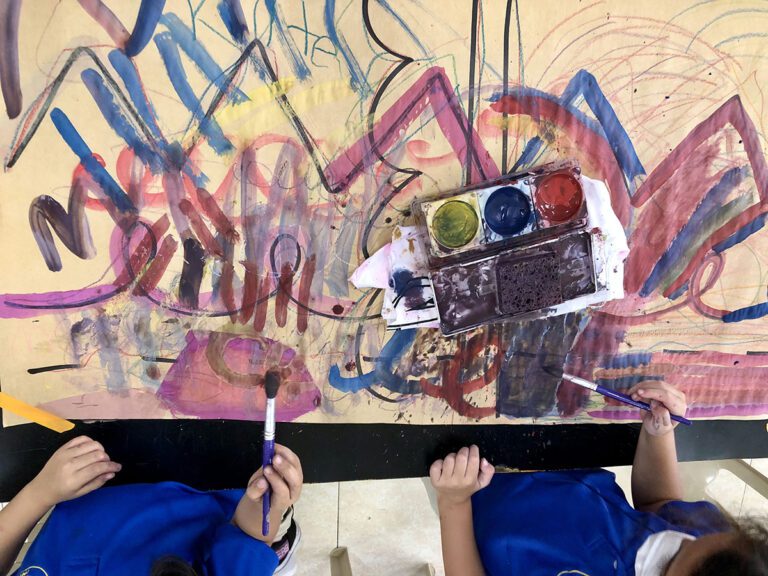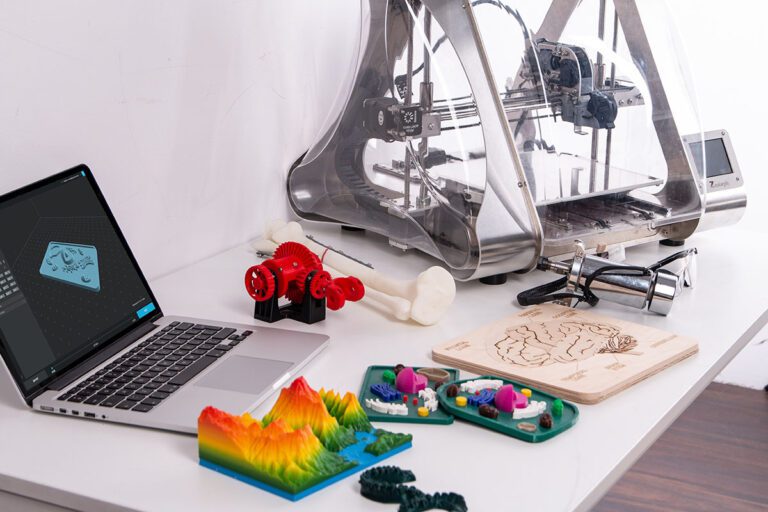Are you seeking new ways to jump-start an exciting and creative tone in your classroom? Would you like to make your classroom environment more collaborative? Do you want to create a space that allows students to experiment?
Starting the year with a Design Challenge can provide this and more!
Design Challenges are quick, fun, and engaging activities for the first week of school and beyond. You can create one that lasts fifteen minutes or can be completed over multiple days and culminate in a larger project. Challenges work best when completed by teams of students. It is a great way to not only practice creativity but also build community.
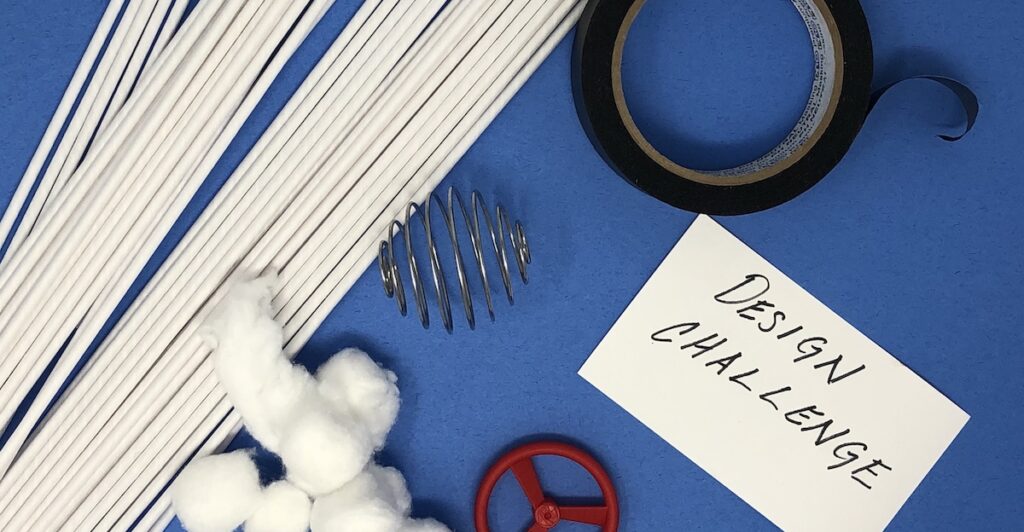
Using basic, ready-made materials makes the process simple. It’s great to use up the donated supplies in the back of your storage area! These random materials are sometimes the best ones. Using the materials, challenge students to solve a problem, design something new, or to have a specific function.
A Design Challenge that works with all ages is a fashion design competition. Give the students paper, scissors, and a stapler. Ask them to create a hat. The hat must be wearable, fashionable, and unique. Students will have a great time folding, cutting, and stapling together a variety of shapes to create a unique hat. At the end of the creation time, have students model the hats in a fashion show. Students will love being fashion designers for this competition. For the next challenge, you might have them working as architects or engineers.
1. Present the Design Challenge:
High School Designers
- Invent a new wheelchair that can go upstairs. Design a small scale model of your chair. You can even use an old dollhouse to test out the model.
- Create a new holder for your cell phone that can be used in the car to prevent people from texting and driving.
- Using cardboard and no glue or adhesive, design a bench for the average student to sit on.
Middle School Designers
- Create a shelter for a class pet or a stuffed animal that can withstand rain and high winds. Have students test the shelter by using a spray bottle and a small fan.
- Provide a testing area various groups can bring their structures over to. Welcome the process of letting them test various methods and materials. Let them make discoveries about the materials. Allow them to fail and try out a completely different method.
Elementary Designers
- Ask students to be an industrial designer and invent a new toy for recess.
- Create a transportation device that can move the class pet around the classroom.
2. Design the Teams:
To create a collaborative classroom, students will need to work together in small groups on the Design Challenge. You can either let them pick the groups, assign the groups and balance the various levels of students, or randomly assign the groups. You may try each one of these configurations as different teams will work for different students.
Create an environment that encourages play. Let students experiment. Let them fail and try a different idea. The more ideas they generate, the better. Let them solve the problem. Try not to intervene, but let them feel encouraged to solve the design problem. Ask students guiding questions to help lead them to solutions. Encourage them to think about alternative ways to solve the problem.
After the challenges are complete, have students evaluate how the groups worked. Make a list of the positive attributes and then a list of suggestions for future guidelines for working collaboratively. Let students be responsible for highlighting what worked and what did not work in their teams.
3. Teach the Design Process:
Show students the design process is flexible and always changing. If a prototype does not work, the group will need to return to the brainstorming phase to rethink their design.
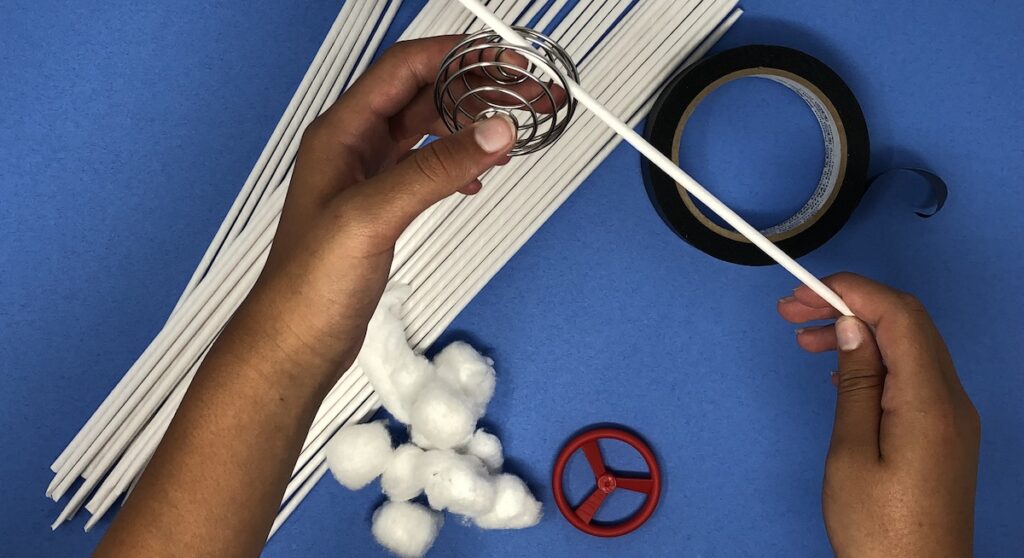
Explain the eight steps of a design:
- Define
- Collect
- Brainstorm
- Develop
- Feedback
- Improve
- Prototype
- Test
4. Provide Guidelines:
For the challenge to be successful, it important students know the expectations of the challenge. Lay out clear guidelines. Here are some suggestions:
- Listen to other students ideas.
- Don’t interrupt.
- Offer alternate solutions.
- Clean up.
- It’s okay to fail.
- Not all ideas will work, and that is okay.
- Compliment each other.
- Work together.
- Involve all members of the team.
5. Gather Supplies:
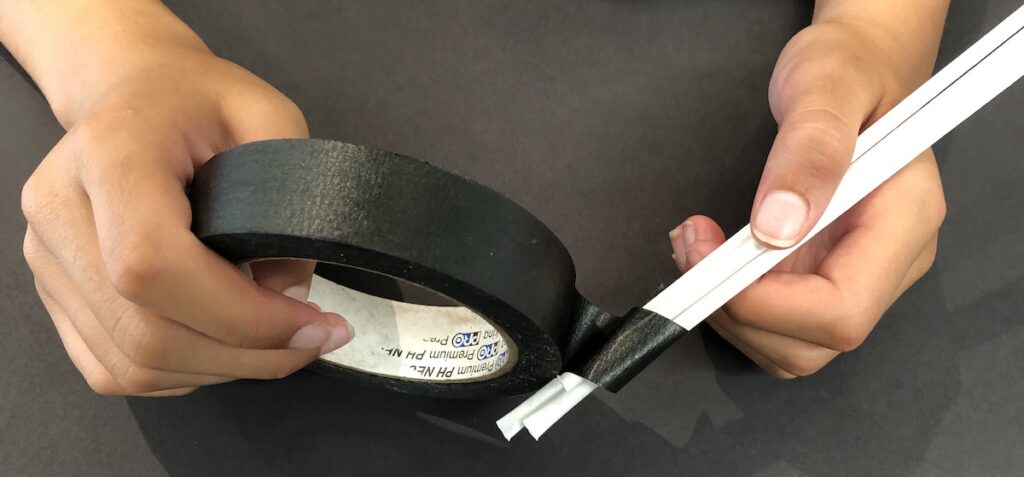
Using basic, ready-made materials for the challenges makes the process simple. You don’t need fancy supplies! Getting students to see ordinary supplies in a new fresh way can be a great part of the challenge as well.
Give students a paper bag with supplies and instructions taped to the outside. Each team can have the same supplies.
6. Create and Celebrate!
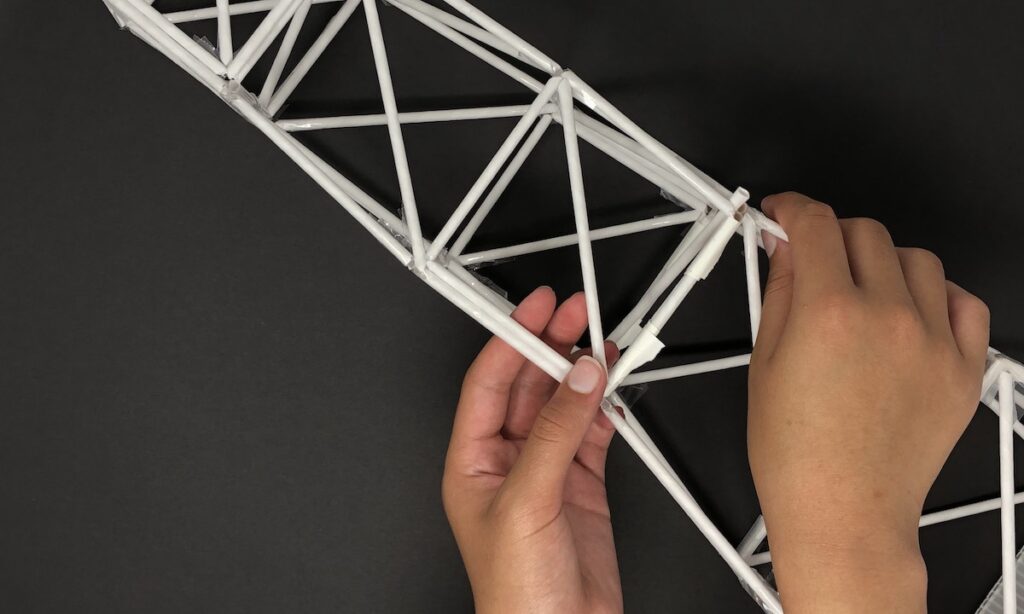
After students have completed the Design Challenge, offer an opportunity for them to share with their classmates, and consider giving awards for Most Unique Design, High Functioning Design, and Aesthetic Award, for example.
Why Design Challenges are so successful:
Design challenges offer many benefits. They are not only a great way to use random supplies and to have a collaborative project at the beginning of the year, but they can also be done throughout the school year and used as year-long artworks. They teach students how to work with 3-D media, allow all groups of students to work together, and show that the process of artmaking involves trial and error and sometimes there is no “right” answer. Try out a Design Challenge in your art room, and see what your students can do!
What do you like about collaborative projects?
How do you incorporate the Design Thinking skills in your classroom?
Magazine articles and podcasts are opinions of professional education contributors and do not necessarily represent the position of the Art of Education University (AOEU) or its academic offerings. Contributors use terms in the way they are most often talked about in the scope of their educational experiences.
